Turn your Selfies into Professional Business Headshots -
Create Your Headshot 👩🏻💼👨🏻💼
AI technology is rapidly evolving and changing how we work, shop, and socialise. One of the most popular uses of this technology is image enhancement. Image enhancement algorithms have two primary categories: segmentation and object recognition.
In today's fast-paced digital world, finding the right tools to enhance your images can make all the difference. If you’ve been exploring options for Deep-image.ai alternatives, you’re likely seeking solutions that offer both exceptional quality and affordability. Whether you’re a professional photographer or simply someone who loves high-quality visuals, discovering the perfect image upscaling tool is crucial.
Enter a world where you can effortlessly elevate your images with a range of Deep-image upscale alternatives. These tools provide impressive features that rival and even surpass those offered by Deep-image.ai. From Deep-image AI-free options to advanced deep AI image enhancer technologies, the right choice for your needs is out there.
Our curated list of alternatives will guide you through the top options available, ensuring you find the perfect match for your image enhancement requirements. Explore these innovative tools to achieve stunning results without compromising on quality or breaking the bank. Get ready to enhance your visual content with ease and confidence!
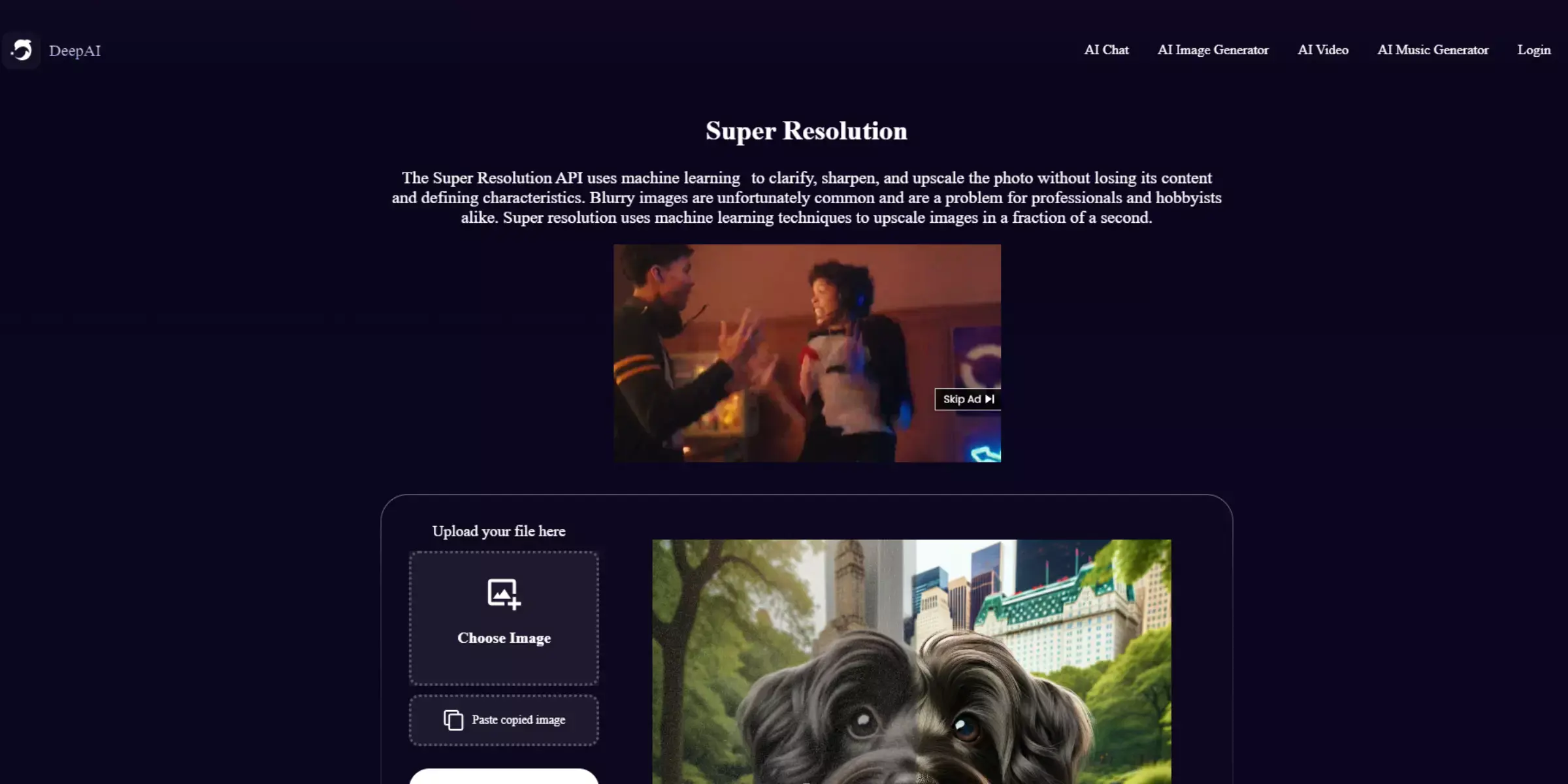
Deep-image.ai is a sophisticated AI-powered tool designed to upscale and enhance images with exceptional clarity and detail. Leveraging advanced deep learning algorithms it can significantly improve the resolution of photos, making them appear sharper and more vibrant.
This tool is particularly valuable for photographers, designers, and businesses seeking to enhance image quality without compromising on detail.With features like automatic noise reduction and detail enhancement, Deep-image.ai provides users with high-quality results that are both efficient and easy to achieve.
It caters to a variety of image formats and offers options for both free and premium services. Whether for personal use or professional projects, Deep-image.ai aims to deliver a superior image enhancement experience by transforming low-resolution images into high-definition masterpieces.
Deep-image.ai is a cutting-edge AI tool designed to elevate image quality effortlessly. By harnessing advanced deep learning technology, it transforms low-resolution images into high-definition masterpieces with exceptional clarity.
Ideal for photographers, designers, and businesses, Deep-image.ai offers automatic noise reduction and detail enhancement to ensure stunning results. With support for various formats and both free and premium options, it provides flexibility and ease of use.
Discover how Deep-image.ai can streamline your image enhancement process, delivering professional-grade visuals quickly and efficiently, making it a top choice for those seeking superior image upscaling solutions.
When seeking alternatives to Deep-image.ai, it’s essential to find tools that offer similar or enhanced image quality improvements. Whether you're interested in deep image upscale features or deep AI image enhancer capabilities, numerous options can meet your needs.
From deep image ai free solutions to advanced deep ai alternatives, these tools cater to various requirements, providing flexible and efficient ways to elevate your visuals. Explore the alternatives below to discover the best fit for your image enhancement tasks, ensuring high-quality results and user-friendly experiences.

Upscale.media stands out as a premier choice for enhancing image quality with advanced AI technology. Specializing in deep image upscale, it effortlessly transforms low-resolution images into high-definition masterpieces. This tool leverages sophisticated algorithms to ensure crisp, clear, and vibrant results, making it ideal for both personal and professional use.
Upscale.media is noted for its user-friendly interface and efficient processing, delivering exceptional quality without requiring technical expertise. For those seeking a reliable deep ai image enhancer, Upscale.media provides a seamless experience with superior results, making it a top contender in the image upscaling arena.
Step 1: Visit the Upscale.media website and upload your image by clicking the "Upload Image" button or using the drag-and-drop feature.

Step 2: Allow a few seconds for the AI-powered software to enhance and upscale your image.

Step 3: Select from the available options, such as 2X or 4X upscaling, based on your needs.
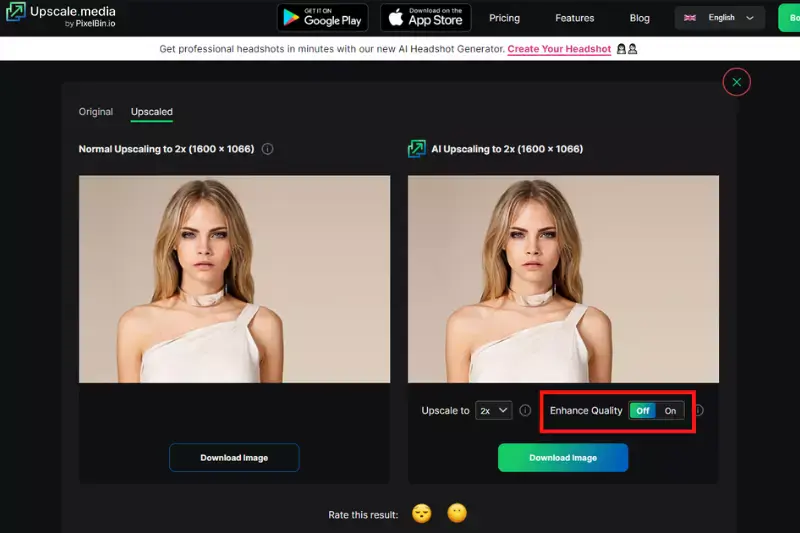
Step 4: Once the upscaling is complete, click the "Download Image" button to save the enhanced image to your device.

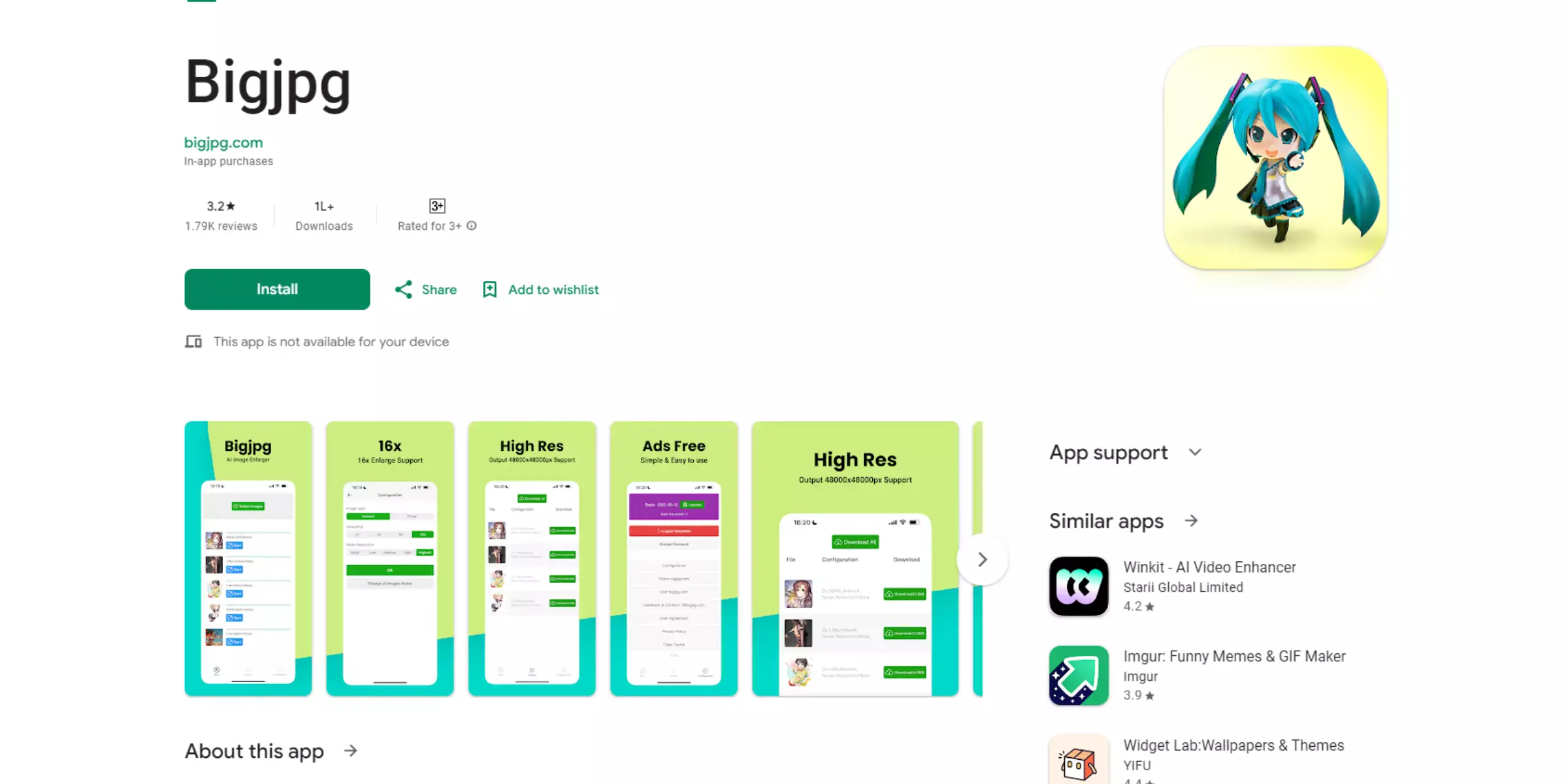
BigJPG is a powerful tool designed to enhance image quality with impressive precision. Specializing in deep image upscale, it uses advanced AI algorithms to upscale images while preserving fine details and minimizing noise.
Ideal for users looking to improve resolution without sacrificing clarity, BigJPG supports various image formats and provides a straightforward, user-friendly interface. Whether for personal use or professional projects, BigJPG ensures high-quality results by effectively enlarging images up to 4x their original size.
With both free and premium options available, it caters to different needs and budgets, making it a versatile choice for image enhancement.

Let's Enhance is a robust image enhancement tool that excels in deep image upscale. Utilizing advanced AI technology, it effectively increases image resolution while preserving important details and textures.
The platform provides a seamless user experience with a simple interface, allowing for easy image uploads and enhancements. Let's Enhance supports various formats, including JPG and PNG, making it versatile for different types of images.
With its ability to upscale images significantly without compromising quality, it is a valuable tool for both personal and professional use, offering reliable performance and high-quality results for image improvement needs.
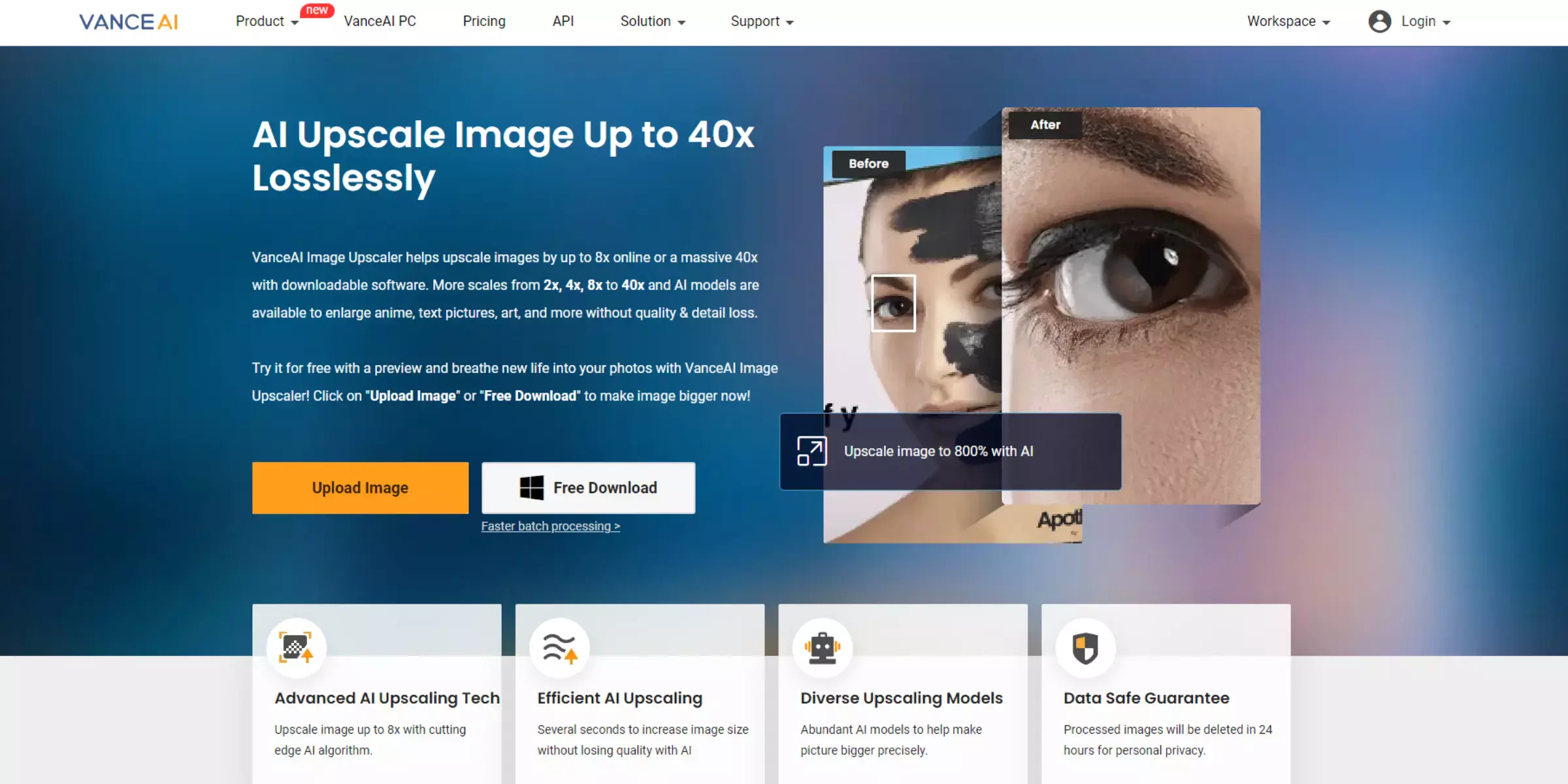
VanceAI is a leading image enhancement platform known for its exceptional deep image upscale capabilities. By leveraging advanced AI technology, it significantly increases image resolution while maintaining sharpness and clarity.
VanceAI provides a range of tools to enhance image quality, including noise reduction and detail sharpening. The platform supports various image formats and offers a straightforward, user-friendly interface, making it accessible for both casual users and professionals.
Whether you're looking to upscale images for personal projects or business purposes, VanceAI delivers high-quality results efficiently, ensuring your visuals look their best.
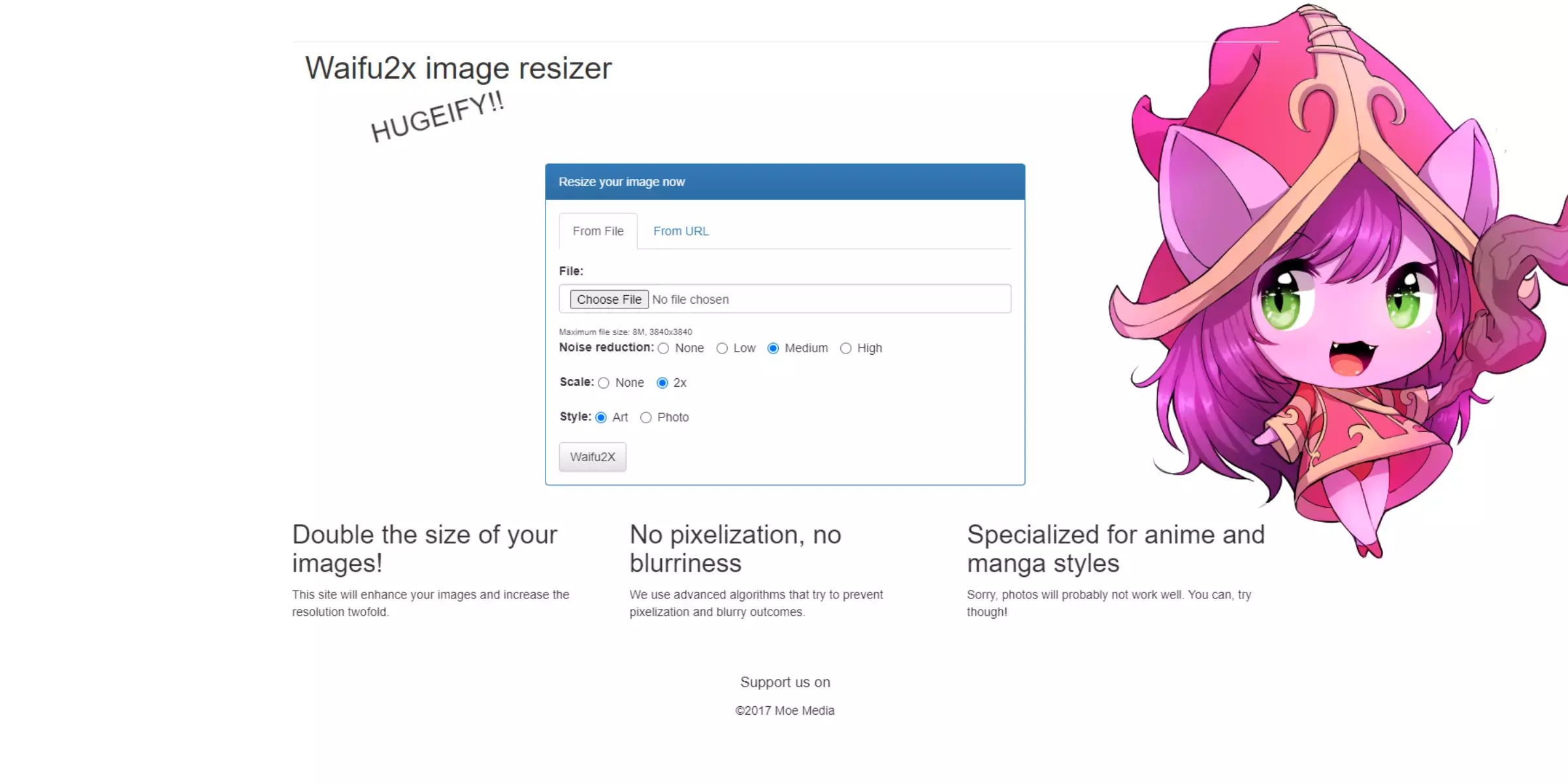
Waifu2x is a popular image upscaling tool renowned for its deep image upscale capabilities. Originally designed for anime-style artwork, it uses advanced deep convolutional neural networks to enlarge images while preserving fine details and reducing noise.
Waifu2x is highly effective at improving resolution without introducing artifacts, making it a valuable tool for both artistic and photographic images. Its straightforward interface ensures ease of use, and it supports multiple formats, including JPG and PNG.
Whether you're enhancing digital art or improving photo quality, Waifu2x delivers high-quality results with minimal effort.

Remini is a powerful image enhancement app that excels in deep image upscale. Using cutting-edge AI technology, Remini revitalizes low-resolution photos, turning them into high-definition images with remarkable clarity.
It is particularly effective at restoring details and reducing blurriness, making it ideal for both personal and professional use. Remini supports a variety of image formats and offers a user-friendly interface that simplifies the enhancement process.
Whether you’re looking to improve old family photos or enhance your latest shots, Remini provides high-quality upscaling with ease, delivering impressive results and a seamless user experience.

AI Image Enlarger is a robust tool designed to facilitate deep image upscale with impressive results. By employing advanced artificial intelligence, it enhances image resolution while preserving essential details and textures.
This tool effectively enlarges images without introducing blurriness or distortions, making it suitable for a range of uses, from personal photos to professional graphics. AI Image Enlarger supports various formats, including JPG and PNG, and features a straightforward, intuitive interface.
Whether you need to upscale images for print or digital use, AI Image Enlarger delivers high-quality enhancements efficiently and effortlessly.

UpscalePics is a versatile image enhancement tool that specializes in deep image upscale. Leveraging advanced AI technology, it effectively enlarges images while preserving fine details and minimizing distortions.
UpscalePics is designed to improve image resolution with high precision, making it ideal for both personal and professional applications. It supports a range of image formats, including JPG and PNG, and features a user-friendly interface that simplifies the enhancement process.
Whether you need to upscale images for high-quality prints or digital use, UpscalePics provides reliable results and an efficient way to enhance your visuals.

ImageUpscaler is a powerful tool tailored for deep image upscale, utilizing advanced AI to enhance image resolution effectively. This platform excels at enlarging images while maintaining high quality and sharpness, ensuring that details are preserved and distortions are minimized. ImageUpscaler supports multiple formats, such as JPG and PNG, making it versatile for various image types.
Its intuitive interface allows users to upload and enhance images without technical hassle easily. Ideal for both personal and professional needs, ImageUpscaler delivers high-definition results and is perfect for improving image quality for prints or digital displays.
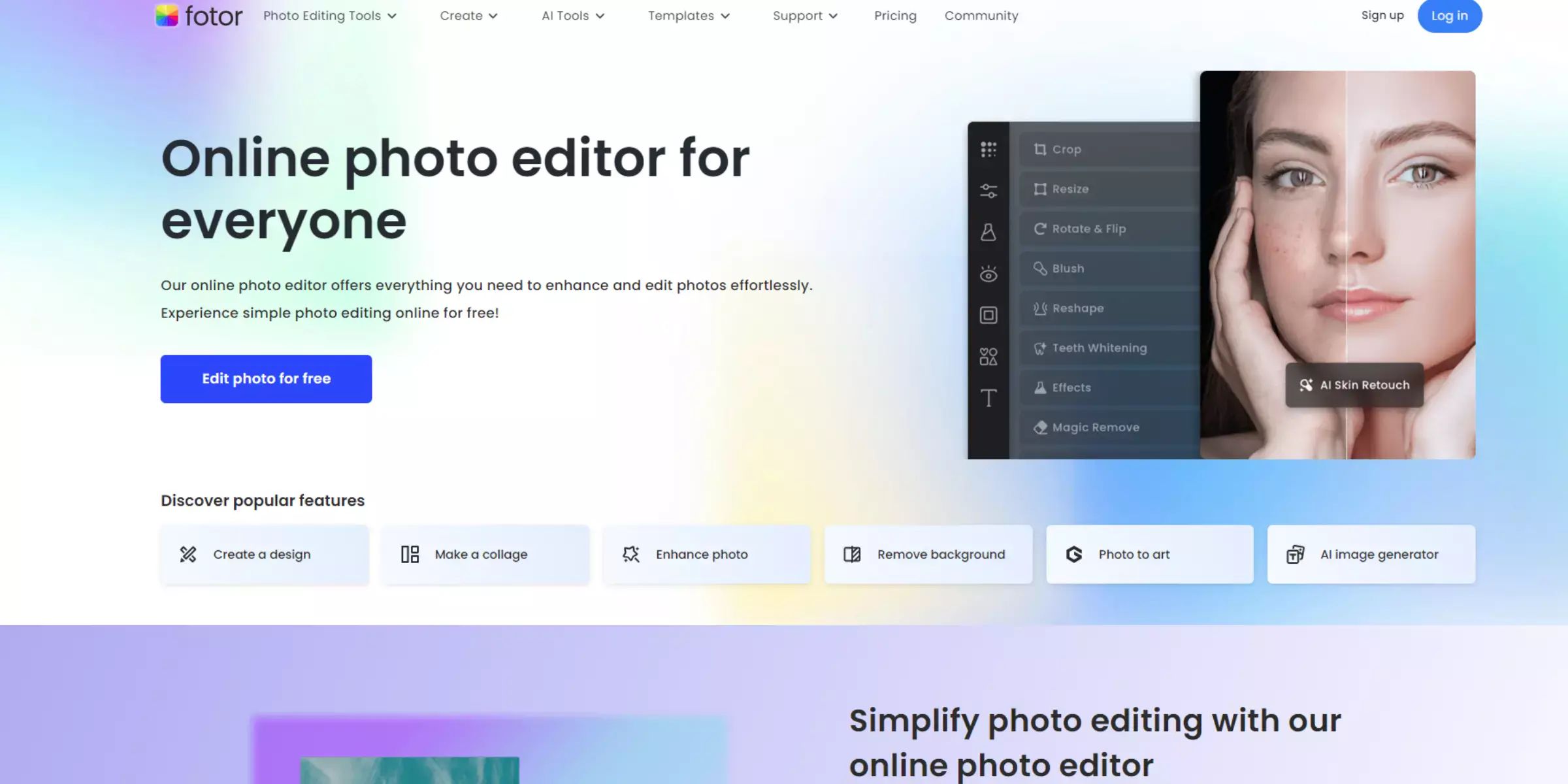
Fotor is a versatile image editing tool known for its deep image upscale capabilities. By leveraging advanced AI technology, Fotor enhances image resolution while maintaining excellent detail and clarity.
It offers a range of features, including powerful editing tools and filters, making it suitable for both personal and professional projects. Fotor supports various formats, such as JPG and PNG, and its user-friendly interface ensures a seamless experience for users of all skill levels.
Whether you're looking to upscale images for high-quality prints or improve digital visuals, Fotor delivers reliable and impressive results efficiently.
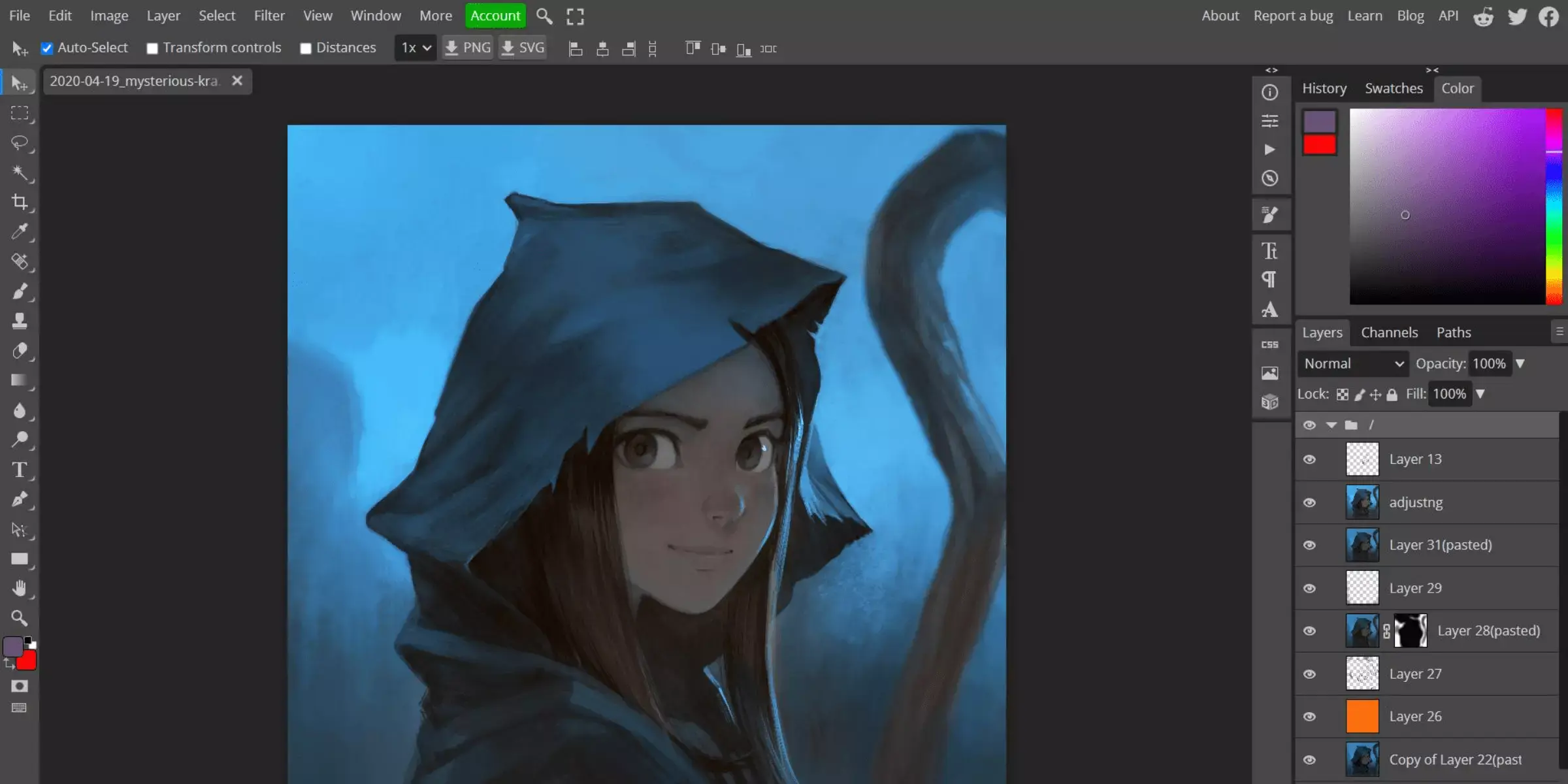
Photopea is a robust online photo editor that includes deep image upscale among its diverse features. Utilizing advanced AI, Photopea enhances image resolution while preserving detail and clarity.
It provides a range of editing tools similar to those found in professional software, enabling users to upscale images effectively without compromising quality. Photopea supports various formats, including JPG, PNG, and PSD, making it highly versatile for different image types.
Its intuitive interface ensures that users, from beginners to professionals, can easily navigate and achieve high-quality enhancements, making it a powerful tool for both personal and professional image editing.

GIMP is a powerful, open-source image editing software known for its capability to perform deep image upscale. Using sophisticated algorithms, GIMP enhances image resolution while preserving fine details and reducing distortions.
It offers a comprehensive suite of tools for various editing tasks, including color correction, retouching, and layer management. GIMP supports multiple file formats such as JPG, PNG, and TIFF, providing flexibility for different project needs.
Its user-friendly interface and extensive functionality make it a popular choice for both amateur and professional photographers seeking to upscale images effectively and achieve high-quality results.

Adobe Photoshop Express is a streamlined version of Adobe’s flagship software, designed to provide high-quality photo editing on the go. It features deep image upscale capabilities, utilizing advanced AI to enhance image resolution while maintaining clarity and detail.
This tool offers essential editing features, including crop, straighten, and filter applications, making it perfect for quick adjustments. Adobe Photoshop Express supports various formats, such as JPG and PNG, and its intuitive interface ensures a smooth user experience.
Whether you're improving photos for social media or creating high-quality prints, this app delivers impressive results efficiently.
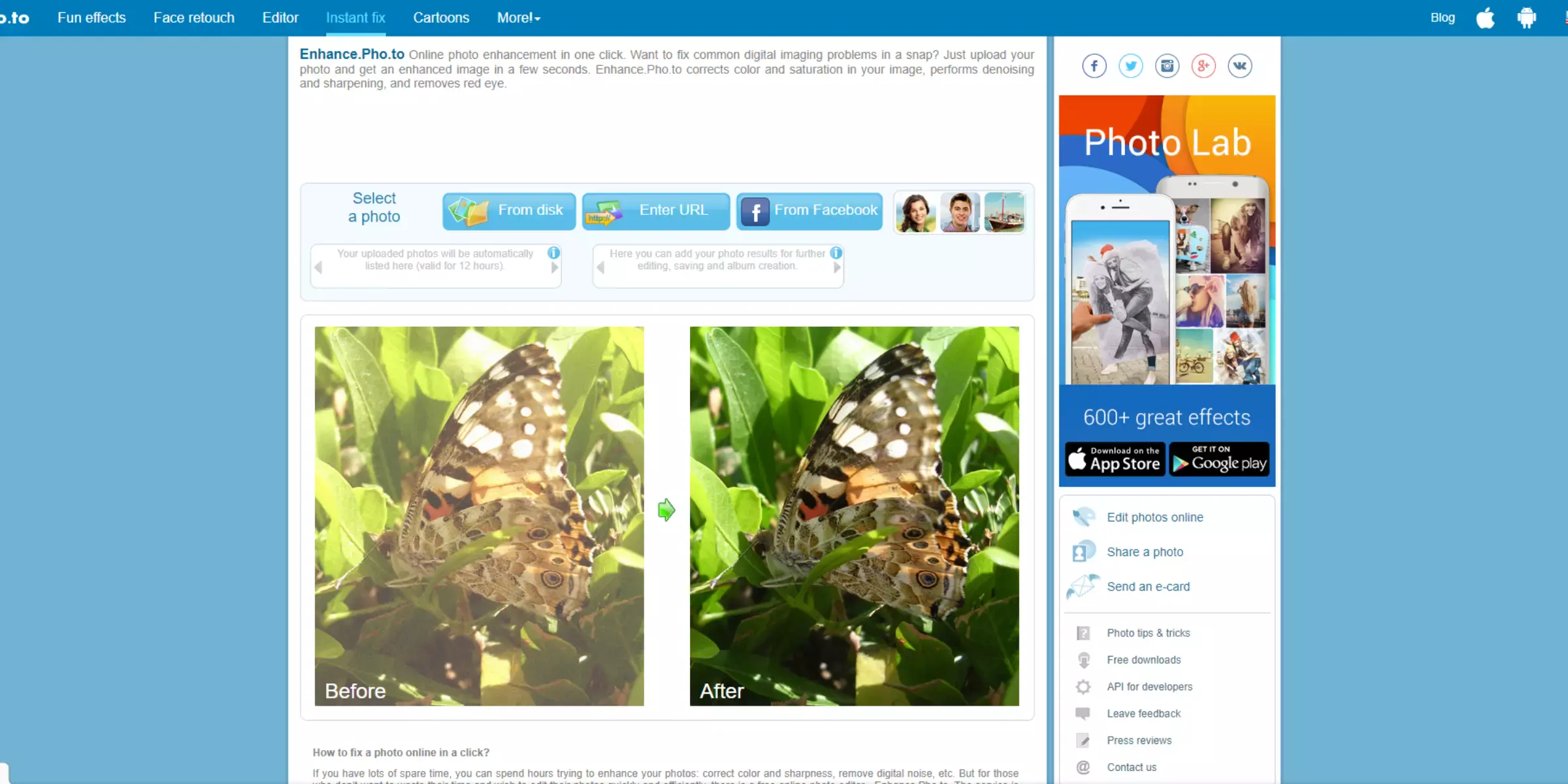
Enhance.Pho.to is an online photo enhancement tool that excels in deep image upscale. Using advanced AI technology it improves image resolution while preserving essential details and clarity.
The platform offers easy-to-use features such as automatic correction of colors, contrast, and sharpness, making it ideal for quick photo fixes. Enhance.Pho.to supports various image formats like JPG and PNG, ensuring versatility for different needs.
Its straightforward interface is designed for users seeking fast and effective image enhancement, allowing both casual and professional users to achieve high-quality results effortlessly.
When searching for the best alternative to Deep-image.ai, Upscale.media stands out as the winner. Powered by advanced AI, Upscale.media delivers high-quality image upscaling with remarkable precision. It seamlessly enhances the resolution of images while maintaining sharpness and detail, making it ideal for both professional and personal use.
Unlike Deep-image.ai, Upscale.media offers a user-friendly interface that requires minimal technical knowledge, allowing users to achieve stunning results in just a few clicks. Whether you're looking to improve the clarity of old photos or need to upscale images for digital projects, Upscale.media provides a superior solution with impressive results.
AI technologies have revolutionized image enhancement, offering powerful tools to improve visual quality significantly. By leveraging advanced techniques, these technologies can upscale images, reduce noise, and restore intricate details with remarkable precision.
From deep learning algorithms and super-resolution methods to colorization and face enhancement, AI-driven tools are reshaping how we process and enhance images. These innovations not only enhance clarity and sharpness but also bring new life to old or low-resolution images.
Understanding these top technologies can help you choose the best tools for your image enhancement needs, ensuring stunning results with minimal effort.
Finding the right alternative to Deep-image.ai can elevate your image enhancement experience. From Upscale.media's advanced AI upscaling to other powerful tools like BigJPG and Let's Enhance, each offers unique features to help you upscale and enhance your images effortlessly.
Exploring these alternatives ensures you can achieve high-quality results tailored to your needs, whether for personal use or professional projects. Embrace these innovative solutions to transform your images and elevate your visual content with ease.
Upscale and enhance images resolution on the go with just a few clicks! Here is our curated selection of top file types for upscale.media.
What is Upscale.media?
Upscale.media is a free image editing website that uses artificial intelligence and machine learning to enhance your images automatically. It's not just a filter, either: it will make colour corrections, adjust exposure and contrast, remove noise, and more.
The website is currently in beta release, with updates coming frequently. This is the perfect site for anyone looking to get beautiful images without any hassle all you have to do is upload an image.
Is Upscale.media free?
Upscale.media is a free image editing tool that uses artificial intelligence (AI) and machine learning to enhance images.
What images are supported?
PNG, JPG, JPEG, and WEBP images are supported. When uploading an image, the following file types will be accepted: PNG, JPG, JPEG, and WEBP. The file must be smaller than 10MB in size for it to be processed.
What are some efficient Deep-image.ai alternatives for image upscaling?
Some noteworthy Deep-image.ai alternatives for image upscaling include Upscale.media, Let's Enhance, Image Upscaler, and VanceAI. These tools use AI-driven technology to upscale images while preserving quality and detail. Exploring various alternatives and comparing their features is crucial to finding the best one for your needs.
Can Deep-image.ai alternatives upscale images without losing original quality?
Most Deep-image.ai alternatives use advanced AI algorithms to upscale images, maintaining their original quality as much as possible. These tools strive to preserve image details and reduce artefacts, resulting in higher-resolution outputs with minimal quality loss.
However, the outcomes may vary depending on the tool and image, so testing different alternatives is essential for finding the most suitable solution.
Are there any free alternatives to Deep-image.ai for image upscaling?
Yes, there are free alternatives to Deep-image.ai for upscaling images. Some of these tools may offer limited features or usage restrictions in their free versions, while others may provide more comprehensive functionality. It's important to compare the features, limitations, and pricing to determine which one best meets your needs and budget.
You can upscale images of anything like objects, humans, or animals , and download them in any format for free.
With Upscale.media, you can easily remove the background of your images by using the Drag and Drop feature or click on “Upload.”
Upscale.media can be accessed on multiple platforms like Windows, Mac, iOS, and Android.
Upscale.media can be used for personal and professional use. Use tool for your collages, website projects, product photography, etc.
Upscale.media has an AI that processes your image accurately and upscales the image automatically upto 4X.
You won’t have to spend extra money or time on the purchase of expensive software to enhance your images.
Every week, we send you one article that will help you stay informed about the latest AI developments in Business, Product, and Design